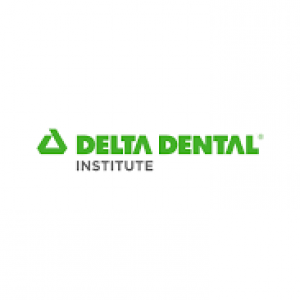
COVID and Retirement Plans
COVID has had a big effect on our lives in many ways - one of them is financial planning, which is true for most retirees. At the beginning of the pandemic, many monetary institutions introduced policies to reduce interest rates, and many companies have, voluntarily or at the behest of the supervisory authorities, ordered cuts in the payment of dividends. These measures were made with the best of intentions. Still, these choices also create problems: retirees who rely on dividends and interest to meet their expenses may see their financial plan reduced (it is the practice of investors to rely on the income produced securities through dividends and interest.
This approach is not without flaws, which often emerge during crises). This may mean you must consider another approach, "homemade dividends." Lowering interest rates in the short term is a classic monetary policy move aimed at countering a contraction of the economy. Returns from fixed rates and prices move in opposite directions. The corporate world has taken steps that could adversely affect retirees' ability to earn income. So what is an investor who needs income to do? You have to change your way of thinking. For some time now, many investors have often thought about income, focusing on stocks that offer enough dividends and interest to meet their needs. However, what an investor is looking for, who needs funds to meet his expenses, is cash flow, which can be obtained through income and the sale of shares in the holdings. This multi-faceted approach to producing cash to be drawn is the "homemade dividend."There will be no shortage of investment opportunities: investors must avoid many traditional investments that have performed well in the past but will have little or no role in aging and highly urbanized future.
Thinking in this way will allow you to see the investment differently. When you invest, it is not so much the return on a stock that matters in terms of achieving the objectives, but the return plus the price change: this is defined as a total return and is by far the best way to evaluate the performance of a stock and its ability to help you reach your financial goals. By applying this method, you will begin by establishing the amount you need to withdraw to meet your expenses. In doing so, it is useful to identify where you have the flexibility and what you cannot do without (useful information during a crisis, when it can be useful to cut expenses).
It would help if you simply determined how often you will withdraw funds, obtaining the necessary liquidity through sales and withdrawals. Some might argue that this causes the capital of an investment to be affected: it is true, but, in many respects, it is a meaningless distinction, as dividends also affect the capital (the payment of $ 1 of dividends per share reduces the share price by 1 $). It is not theory; this is how dividends have always worked: sometimes, it can be difficult to realize due to the volatility of the markets, but receiving a dividend reduces the share price, drawing on the capital. Focusing on total return and applying a strategy based on homemade dividends can help you take control of your withdrawal plan and needs, avoiding relying on the timing and extent of dividend and interest payments.
 Tag
Tag
 Related articles
Related articles
News 07 October 2025
New data from Delta Dental highlights how dental care utilization among insured Americans has rebounded following the COVID-19 pandemic but also reveals several lasting shifts in treatment patterns...
Digital Dentistry 17 June 2025
Clinical relevance of digital dentistry during COVID-19 outbreak: a scoped review
o perform a scoped literature review on advantages of digital workflows in dentistry that could be widely adopted to address safety issues raised during the coronavirus (COVID-19) pandemic.
Oral pathology 23 December 2024
Oral Pathology in COVID-19 and SARS-CoV-2 Infection—Molecular Aspects
This review article was designed to evaluate the existing evidence related to the molecular processes of SARS-CoV-2 infection in the oral cavity.
Oral Hygiene & Prevention 07 August 2024
Dental Patient Management in the Context of the COVID-19 Pandemic: Current Literature Mini-Review
Considering dental data gain associated with COVID-19 in the last few months of 2020, it is highly important to provide an assertive critical literature review with the categorization and...
News 19 September 2023
Dentists report insurance reimbursement rates decreased: ADA research
Dentists report that dental insurance reimbursement rates have decreased over a span of 12 months, according to the August Economic Outlook and Emerging Issues in Dentistry poll from the ADA Health...
 Read more
Read more
Digital Dentistry 19 November 2025
Increasing awareness of tooth fracture, both complete and incomplete, as a significant disease entity has led to improved diagnostic techniques.
Editorials 19 November 2025
As Ellen Simmons-Shamrell of the Class of 1977 wrote her annual check for the Michael D. Scotti, DMD Endowed Scholarship—established in memory of her late classmate—she reflected on how different...
Products 19 November 2025
Smartee Denti-Technology has unveiled the Smartee Digital Orthodontic Technology Exhibition Hall, a 1,200-square-meter space dedicated to showcasing the company’s innovations in clear aligner...
News 19 November 2025
Coupa, the global leader in AI-powered spend management, today announced a new collaboration with Specialized Dental Partners, a premier dental support organization (DSO) dedicated to enabling its...
News 19 November 2025
Breakthrough T1D has been selected as a 2025 Health Access Hero Award grant recipient by Sun Life U.S. and DentaQuest.















